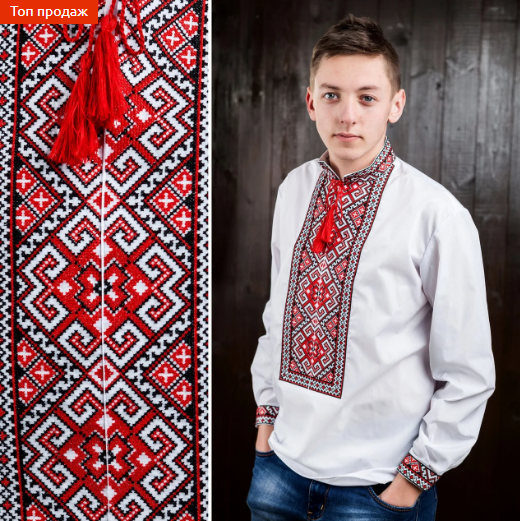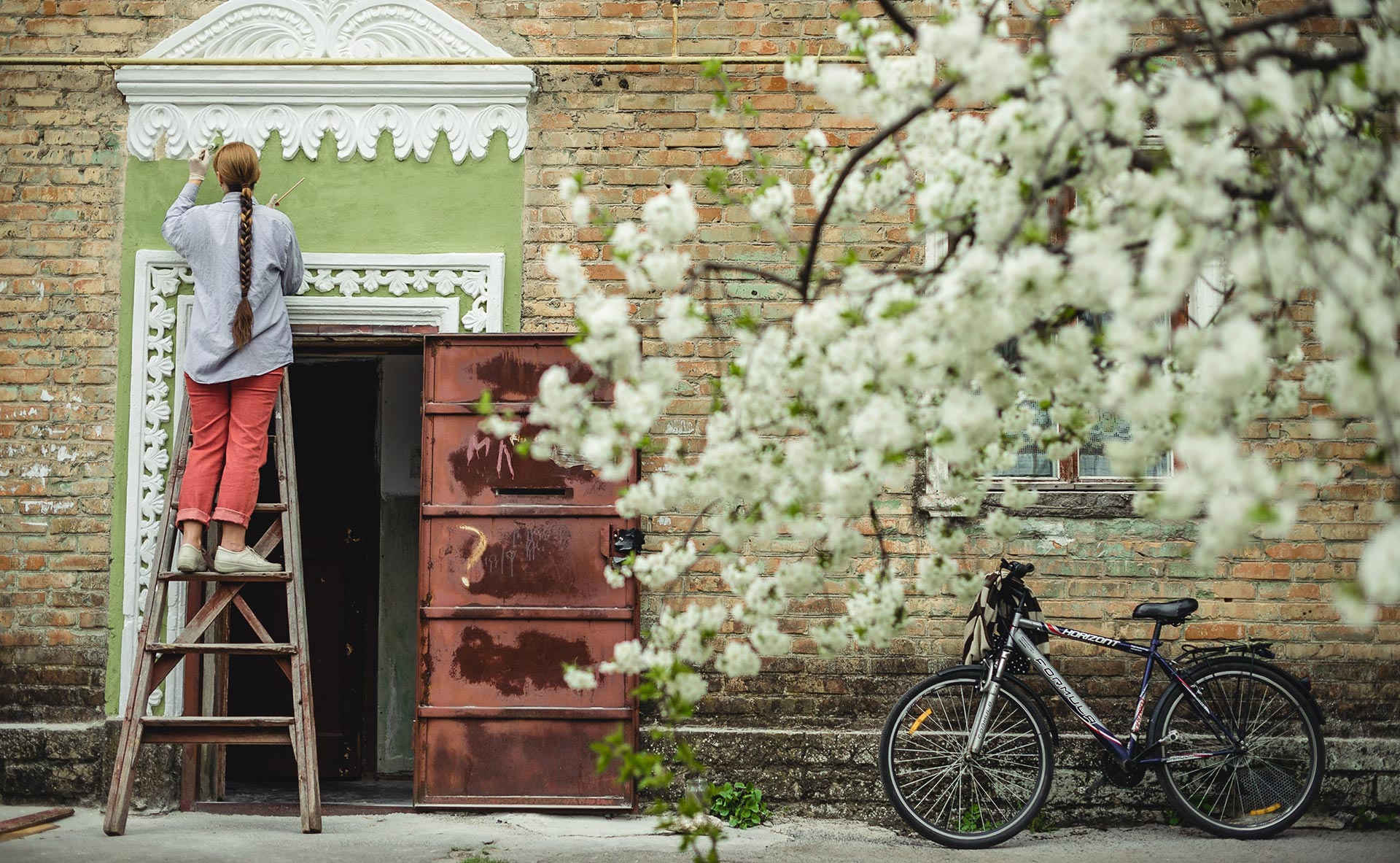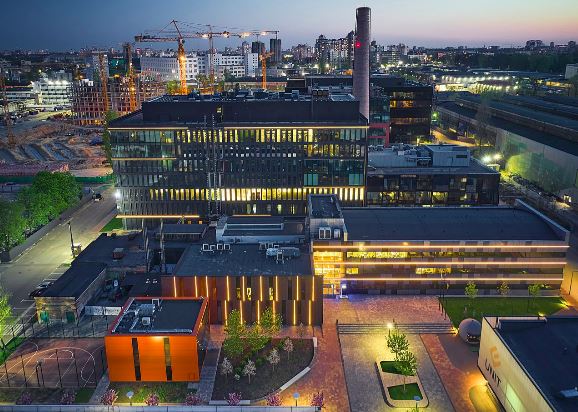Today, the ornaments are under threat — not just from the passage of time, but from building insulation and the modernization of the facades as well. Thanks to the actions of local activists, however, the “stone vyshyvankas” are gradually being restored in the town.

Once, Ukrainian film writer Oleksandr Dovzhenko visited Nova Kakhovka to create the script for his future film, “A Poem About the Sea” (1958). He was stunned by how grey and gloomy the buildings looked.
It was his written request to the Academy of Architecture that brought to the newly built settlement a group of artists and architects, who took to decorating the facades with enthusiasm. Hryhoriy Dovzhenko was one of them.
The artisans worked until 1955, during which time they managed to ornament every building in the town: from residential homes to schools and administrative buildings — some 180 structures in total.
Using Dovzhenko’s sketches, unique ornaments were created, with no two designs being the same.

The artist’s works embodied the main ideas of the Boichukists (artists and monumentalists, students, and followers of Mykhailo Boichuk — Auth.). This manifests in simplicity and uniformity of traditional shapes, interlaced patterns with depictions of birds and plants, as well as in the idea of popularising Ukrainian art and combining beauty with routine.

Other artists worked on the project alongside Dovzhenko — his son Taras and several Boichukists, Oleksandr Myzin
among them. All of the ornaments turned out to be as hard as a stone, and thus remain largely undamaged to this day.
The secret to their strength lies in a special stucco compound that Dovzhenko has patented and used in creating these pieces. Painting over damp plaster based on polyvinyl chloride synthetic resins proved to be of significant help to the artisans, as this compound took longer than usual to harden.
Articles about Nova Kakhovka published by the Soviet media after 1955 describe Dovzhenko’s ornaments as unnecessary embellishments [as was often the case in the USSR - Ed]. Now, however, they carry the status of an architectural landmark and are under the local community and activists’ protection.

Architect Tetiana Yevseieva moved to Nova Kakhovka from Russia in 1986. She tells that she first read about the city in a history textbook while studying architecture at the university and that it was used as an example of a town built to a unified plan. When the question of demolishing the old town arose, Tetiana and other activists came together to preserve the unique architectural forms.
In 2011, they founded the Society for the Protection of Cultural Heritage of Nova Kakhovka, with the preservation of Dovzhenko’s pieces and the promotion of his work as one of the NGO’s main goals. Tetiana herself serves as the head of the organization, and Diana Ivannikova as her deputy. Tetiana’s occupation influenced her decision to take up this task — as an architect, she understands the importance of Nova Kakhovka’s ornaments like no one else.
"I felt sorry for these buildings. There’s a district where the new residential buildings have already been built, while these beautiful buildings were being set on fire and demolished to make room for boxes of autoclaved aerated concrete lined with styrofoam and reinforced plastic. This is truly an architectural marvel, and, in the 1980s, it had already been listed as a historic settlement. For some reason, people could appreciate it then, but now we’ve forgotten this, even though it’s a world-class landmark."

Read the full story here.
THE MATERIAL IS PREPARED BY
The author of the project: Bogdan Logvynenko, Author: Vasylyna Haran, Editor: Kateryna Lehka, Producer: Olha Shor, Photographer: Mykyta Zavilinskyi, Photographer, Cameraman: Pavlo Pashko, Cameraman: Oleksandr Sloboda, Film editor: Maria Terebus, Director: Mykola Nosok, Photo editor: Oleksandr Khomenko, Transcriptionist: Yulia Kostenko, Translator: Matviy Kraiev, Translation editor: Michael Chumak








